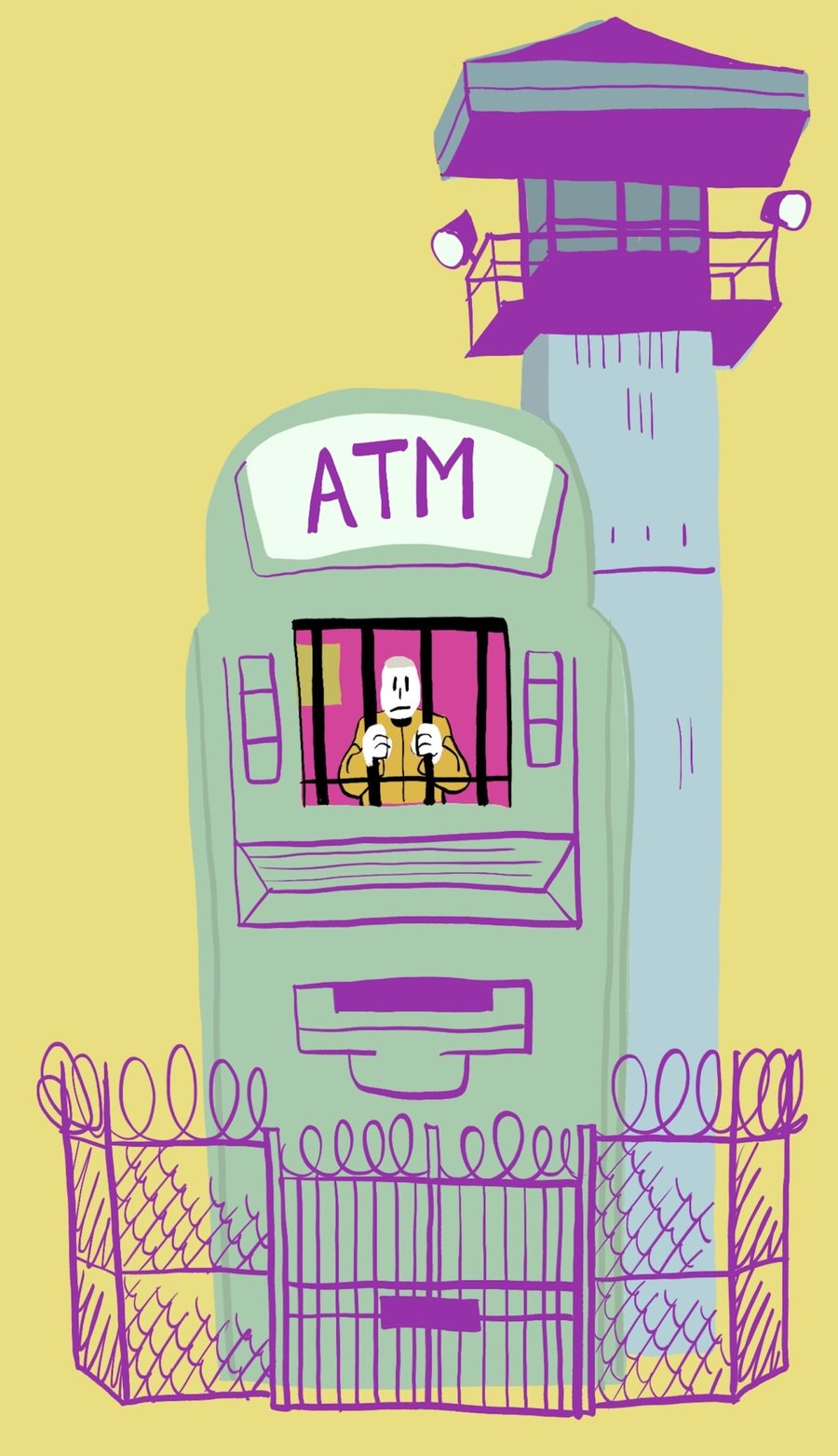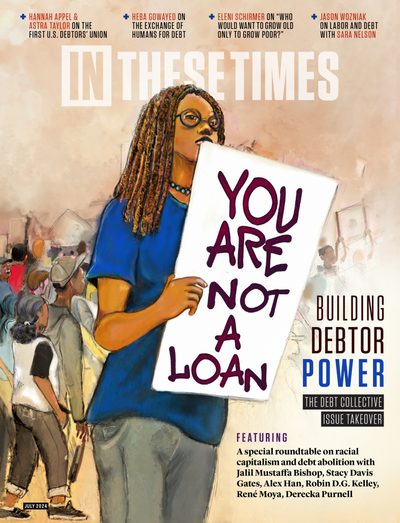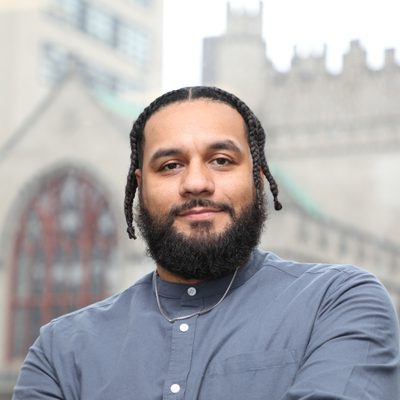Exiting Prison With No Money, No Credit and No Way to Avoid Debt
How the consequences of incarceration and reentry create financial–and social–debt.
Calvin John Smiley

Marcelino Rodriguez had no debt when he was released from prison in 2019 — and no credit. A Bronx native, Rodriguez was arrested for manslaughter at 17 and served 17 years of a 20-year sentence. Upon release, he relied on cash and debit until he was able to qualify for a secured credit card with a $500 limit. He quickly took on debt in an attempt to build more credit.
Now, five years later, Rodriguez is caught in a cycle, owing an estimated $30,000 that is “spread around,” meaning he has had to borrow from one place to pay back another.
By most measures, especially in the eyes of the legal system, Rodriguez is a success. In the years since he was released, he has been able to get his own apartment, engage in a long-term relationship and co-parent his son, who lives in upstate New York. He is also a director at a nonprofit that serves incarcerated youth, and for a time he operated his own vintage clothing company. While incarcerated, he earned a bachelor’s degree from the Bard Prison Initiative college program. His senior thesis was titled, “The Value of Breaking the Magic Spell: Teenagers, Suicide and the Emancipatory Potential of Young Adult Novels.”
I agree that Rodriguez has a success story, but it depends how we define success — and whether we believe success means liberation in all of the different ways we need to be free, including financial stability. Rodriguez’s life is full of various kinds of debt, and his release does not absolve him of the realities and repercussions of the precarity of loss and other forms of social debt that folks who have served time must reconcile.
One way Rodriguez thinks about his financial status is “to never go shopping on an empty stomach.” Being imprisoned for so long, he felt pressure to “catch up” to his peers and others, which meant spending money he did not have on food, vacations, clothing and material items. As Rodriguez explained, “I wanted to experience it all, I felt like I needed to make up for lost time, I wasn’t thinking about down the line but the here and now.”
Further, the social debt of his actions as a teenager created strain in familial relationships, which he had to contend with as his financial debt loomed.
“Nothing [in prison] really prepares you for ultimate financial freedom and responsibility,” Rodriguez said. Incarcerated at such a young age, Rodriguez stepped back into the world without the traditional experiences of using money. The little money he did receive from family while incarcerated often went toward food or low-stakes gambling; saving or investing money while incarcerated is nonexistent, which does not translate into financial planning post-incarceration.
Scholarly research on debt and reentry is surprisingly limited. The evidence produced from what is available highlights the reality that those incarcerated come disproportionately from low-income communities that endure debt-related issues on multiple levels. An American Journal of Criminal Justice article published in 2020 found that there are three leading sources of debt for system-impacted individuals: One is pre-existing debt prior to incarceration. The second comes from various legal obligations. And the third is, just like Rodriguez’s experience, debt accrued in reentry.
When doing research for Purgatory Citizenship: Reentry, Race, and Abolition, I found many of those exiting prison and living in halfway houses were charged “bed fees,” which immediately and intimately created financial hardship. Further intensifying these forms of debt are the collateral consequences of incarceration, such as not being able to secure employment, obtain stable housing or enroll in educational programs. Then there’s the stigma and perpetual punishments because of one’s status as someone under criminal legal supervision.
I have also written about the social construction of time in relation to incarceration and reentry with Keesha M. Middlemass, a professor at Howard University. We found the concept of “losing time” for those incarcerated to be profound, as carceral systems are designed to be cyclical, not linear, in routine and habit.
The urgency so many feel when released can put people into precarious situations that result in debt accumulation. As Rodriguez articulated, he was looking to have “the experiences that I feel I missed out [on] because I spent all my twenties and nearly all my thirties inside.”
Beyond financial debt, the consequences of incarceration and reentry create a form of social debt, in which individuals must show up in ways that non-system impacted people do not. This is the basis for my concept of “doing reentry,” which refers to the rituals, ceremonies, programs and services deemed acceptable and compulsory for those returning to society, such as attending group meetings, earning program certificates or limiting one’s emotions.
Prison is often described as the “debt one pays to society,” but we know this is just a slogan. Social debt, in particular, carries over in the need for assistance from individuals and institutions to help people “get back on their feet.” Those doing reentry must be contrite, appreciative and grateful, or their social debt can be extended. Rodriguez, for example, spent his first year of freedom on his sister’s couch. He explained that, “at first, I think she felt guilty for not being there for me for a long time. But after a while, it was more like she was doing me a favor and I owed her.” The two no longer talk.
Rodriguez remains confident he will be able to pay his financial debt. When I asked how he could have avoided it, he was reflective: “Money is taboo, so no one talks about it in a real way. This probably has to do with pride or shame, but removing that stigma of just discussing money is important.”
Strategies around shedding the taboo of money and debt must be implemented in reentry programs. But we also know that this only tackles a symptom of the broader structural and institutional stratification that creates wealth disparities.
“It’s great to give us [formerly incarcerated people] jobs,” Rodriguez said, “but without the right knowledge, we are being set up to financially fail.”
We must envision and construct systems that do not blame individuals and scold them to simply do better. This includes broadening social welfare, empowering communities, and radically demanding change to economic systems that are reliant on debt and do not provide avenues to liberation.
Calvin John Smiley is associate professor of sociology at Hunter College and author of Purgatory Citizenship: Reentry, Race, & Abolition and Defund: Conversations Towards Abolition.







